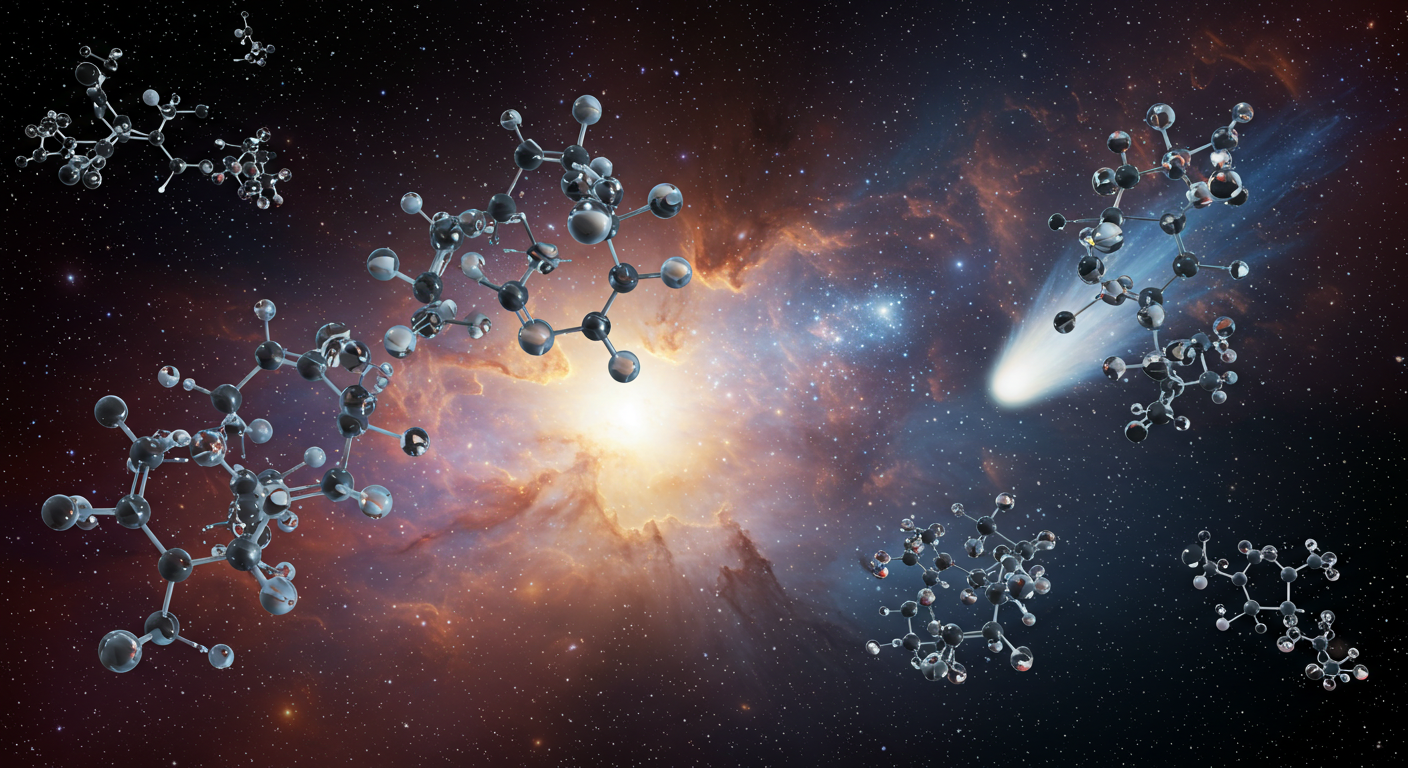Get ready to meet hcooch ch2 h2o! Now, that name might look like a secret code, and in a way, it is! It’s not something you’ll find in everyday conversation, but it is a fascinating little player in the giant world of chemistry. This unusual name points to something quite specific—a subject of deep curiosity for scientists looking into both the vastness of space and the tiny building blocks of matter. Imagine water (which you know as H₂O) giving a special ‘hug’ to another simple molecule called formaldehyde. That’s getting close to what we’re talking about with it.
It’s like these two common substances team up to become something new and particularly interesting—a chemically significant duo.
Our Adventure with hcooch ch2 h2o
Therefore, we’re going on an adventure to explore what hcooch ch2 h2o actually is.
We’ll look at where it might come from (spoiler alert: possibly even outer space!), explore its formation and stability, and discover why scientists think this tiny molecule could hold big clues about the universe and maybe even the beginnings of life itself. So, buckle up as we dive into the intriguing, science-rich story of hcooch ch2 h2o.
Unpacking hcooch ch2 h2o: A Chemical Detective Story
What is This Mystery Molecule, hcooch ch2 h2o?
So, what exactly is this hcooch ch2 h2o stuff? Think of it like a special partnership between two well-known chemical characters.
Scientists believe that it is what happens when formaldehyde (a simple molecule with the chemical formula HCHO) and water (good old H₂O) get together in a very specific and structured way. It’s not just a casual mix; it’s a more stable molecular interaction.
Formaldehyde’s Energetic Nature
Formaldehyde on its own is super reactive—you can picture it as an extremely energetic puppy that constantly wants to play and needs a leash to keep it from bouncing off the walls!
Water: The Calming Influence on hcooch ch2 h2o
In this scenario, water acts somewhat like that leash. It helps to calm formaldehyde down, making it more stable and less prone to reacting uncontrollably.
This ‘leashed’ or stabilized version is what scientists are referring to when they discuss the unique properties of hcooch ch2 h2o. This interaction is significant because free formaldehyde, while useful, can also be quite toxic and difficult to manage due to its high reactivity.
The Special Connection: Hydrogen Bonds in it
This partnership isn’t as simple as, say, sugar dissolving in your tea. It’s more like the water molecules carefully arrange themselves around the formaldehyde molecule.
They hold onto it through special, relatively gentle connections called hydrogen bonds. Imagine tiny magnets on each molecule, with the positive part of one attracted to the negative part of another – that’s a simplified way to picture how the molecular makeup of it works, forming what chemists call a hydrogen-bonded adduct.
This specific arrangement is what gives the hcooch ch2 h2o complex its unique and scientifically valuable characteristics.
Why This Molecular Team-Up in hcooch ch2 h2o Matters
Why is this molecular team-up important? Well, this stabilized form of formaldehyde—our hcooch ch2 h2o—behaves quite differently than formaldehyde would if it were on its own.
The presence of water changes how formaldehyde interacts in chemical solutions, essentially altering its reactivity. It might react in new and unexpected ways, or perhaps it might not react when scientists would otherwise expect it to.
This altered behavior opens up a whole range of cool possibilities for scientists to study and potentially harness. For example, this stabilized form could be a key intermediate step in more complex chemical reactions—a step that might have been previously overlooked.
Where Does hcooch ch2 h2o Come From? Cosmic Dust to Lab Bench
The Surprising Origins of hcooch ch2 h2o
You might be quite surprised to learn that molecules like hcooch ch2 h2o aren’t just things that scientists cook up in laboratories with bubbling beakers and complex equipment.
In fact, many scientists believe that these types of molecules can form naturally in some really out-there, extraordinary places. It’s a big universe, and chemistry happens everywhere—even in the vacuum of space.
hcooch ch2 h2o in the Cold Expanse of Space
Imagine the cold, vast, and seemingly empty regions of space between stars.
Even in these incredibly chilly environments, on the surfaces of tiny, icy dust grains in what are called interstellar clouds, or perhaps locked within the icy hearts of comets whizzing through our solar system, the basic ingredients for hcooch ch2 h2o (like formaldehyde and water ice) are known to exist.
Cosmic Conditions for hcooch ch2 h2o Formation
Under the right conditions—perhaps a little nudge from cosmic radiation, or a slight warming as a comet approaches a star—these simple ingredients can react.
They can combine to form more complex molecules, and scientists theorize that hcooch ch2 h2o could be one of them. This process shows that the formation of such compounds is not limited to Earth and may be a universal phenomenon.
Cosmic Mail Delivery: hcooch ch2 h2o from Space?
This is super exciting for a couple of reasons. Firstly, comets and meteorites, which can carry these space-formed molecules, sometimes crash into planets like Earth.
It’s like a form of cosmic mail delivery, potentially bringing interesting chemical packages from the far reaches of space. This is one significant reason why the natural occurrence and synthesis of hcooch ch2 h2o in space is so fascinating to astrobiologists.
These are the scientists who study the possibility of life existing beyond Earth and the chemical pathways that might lead to it. The idea that building blocks for life—or molecules that could help form them—are present in space is a tantalizing and active area of study.
Creating hcooch ch2 h2o on Earth: Laboratory Synthesis
Back on Earth, in more controlled environments, scientists can also create and study it in their laboratories.
They might achieve this by carefully mixing formaldehyde gas and water vapor under precisely controlled conditions of temperature and pressure to simulate realistic scenarios.
Alternatively, they might dissolve formaldehyde in liquid water and then closely study the resulting mixture and the dynamic equilibria that form between reactants and products.
The Importance of Lab Experiments for Understanding it
These laboratory experiments are crucial. They allow scientists to understand exactly how it forms, what its precise structure is, and what its chemical and physical properties are.
This, in turn, helps them better interpret observations from space and to predict where else this unique molecule might be found in our galaxy.
Why Scientists Are Obsessed with hcooch ch2 h2o
A Possible Clue to Life’s Origins
Why is this molecule so important? Because it could help us understand how complex chemicals—maybe even the precursors to life—form naturally, without any need for biological activity.
Formaldehyde is a key building block in a famous theory called the formose reaction. This is a process where formaldehyde molecules can spontaneously combine under the right conditions to form sugars, which are essential for life as we know it.
The Role of hcooch ch2 h2o in Prebiotic Chemistry
Now, if water can stabilize formaldehyde in the form of hcooch ch2 h2o, this might make the formose reaction more likely to happen in nature—especially in early Earth or interstellar environments.
This simple stabilization step could tip the chemical balance toward creating more complex organic molecules, possibly setting the stage for the emergence of life. That makes it more than just a chemical curiosity—it’s potentially a crucial piece of the origin-of-life puzzle.
The Broader Impact on Space Chemistry
Beyond life, this little molecule could help explain a lot about how chemistry happens in cold places, where reactions typically slow down or even stop.
By studying molecules like it, scientists can better understand astrochemical processes—chemical reactions that occur in space.
That means clearer models for how planets, stars, and even galaxies evolve on a molecular level. It also helps with interpreting data from telescopes that scan space for molecular fingerprints.
Conclusion
So, what have we learned about our mysterious molecule?
It’s likely a special hydrogen-bonded adduct—a kind of chemical handshake—between formaldehyde and water. It’s something that could form naturally on Earth or even in outer space, and it may play an important role in how complex organic molecules are born.
While it might not be something you encounter every day, understanding it gives us incredible insight into the chemical complexity of our universe.
A Window into the Universe’s Chemistry
From laboratory experiments to theories about comet chemistry and the building blocks of life, it represents a tiny but mighty puzzle piece in our quest to understand where we came from—and perhaps where life might exist elsewhere in the cosmos.

